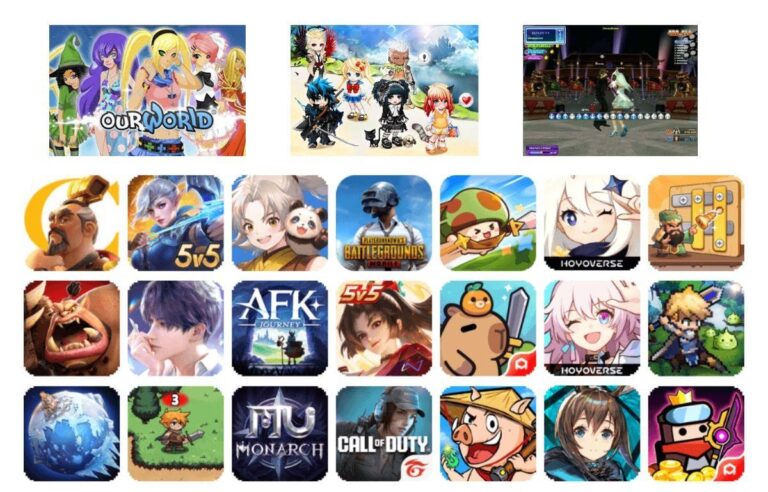It has been a long time since video games have become a permanent part of our lives. They are in high demand all over the world. If we specifically talk about the Southeast Asian market, yes games are surely rising there. Every day, millions of gamers from these nations like the Philippines, Vietnam, Thailand, and many others play games for hours.
This makes it important for game developers to turn their gamers into understandable experiences. It is crucial to make sure their games seem local, in order to enter the global marketplace. This is where gaming translation services play a crucial role. These services transform these games into comprehensible experiences so that gamers all around the world can play games without facing any linguistic and cultural barriers.
Localization is more than just translating text, rather translation is just one aspect of the umbrella term localization. Simply speaking, localization is the adaptation of a game and all its features such as linguistic, cultural, functional and graphical ones as per the needs and demands of the target audiences. If done right, it can make a game more engaging and increase its success in the SEA market.
Why Localizing for SEA Matters
Large Gaming Audience
The gaming community in SEA is enormous and still expanding. Millions of gamers in nations like the Philippines and Indonesia enjoy playing PC, console, and smartphone games. Localizing their games allows developers to expand their audience and boost revenue.
Language Diversity
Many SEA countries have multiple official languages. For example:
- Indonesia: Bahasa Indonesia and regional languages
- Thailand: Thai
- Vietnam: Vietnamese
- Philippines: Filipino and English
Localizing into the right language and culture helps players understand and enjoy the game more.
Cultural Preferences
Every SEA nation has its own customs, emblems, and cultural allusions. Certain gestures, colors, or narrative elements could be considered offensive in one nation but good in another. A well-localized game respects these cultural differences.
Key Aspects of Game Localization for SEA
Translating Game Content
This includes:
- In-game dialogues and text
- Menus and settings
- Subtitles and instructions
- Currency and measurement conversions
Accurate translation helps players feel comfortable and connected to the game world.
Adapting Visual Elements
Some images or symbols may not work well in certain SEA countries. For example:
- Religious symbols should be used carefully
- Color meanings vary (e.g., white symbolizes mourning in some cultures).
Design elements should match local expectations to improve user experience.
Voiceover and Subtitles
Many gamers prefer playing with native voiceovers and subtitles. A good game localization company ensures that voice actors sound natural and relatable to local players. If voiceovers are not possible, well-timed subtitles in the right language can enhance gameplay.
Payment and Pricing Adjustments
In SEA, players use different payment methods, including:
- Mobile wallets
- Local banks
- Prepaid cards
Players can buy games and in-game products more easily when localized pricing and payment methods are available.
Testing and Feedback
A game needs to be tested with actual players from the target nation after it has been localized. This aids in detecting problems with gameplay mechanics, cultural references, or translation. Fixing these before launch improves player satisfaction.
Challenges in Game Localization for SEA
Multiple Languages and Dialects
It may be difficult to choose from the various languages spoken in some countries. For instance, although some players in the Philippines may favor Filipino, others may prefer English.
Different Gaming Preferences
Gamers in SEA enjoy various genres. Some prefer competitive games like MOBAs, while others love story-driven RPGs. Understanding local tastes helps developers create the right experience.
Internet and Device Limitations
Not all players in SEA have high-end gaming devices or fast internet. Optimizing games for lower-end devices ensures more players can enjoy them.
Best Practices for Successful Game Localization
Work with Native Experts
Hiring local translators and testers ensures accuracy and cultural relevance. Native speakers understand slang, humor, and expressions better.
Keep Text Concise
Some languages take up more space than English. Keeping text short and clear prevents UI problems.
Consider Regional Events
SEA players love in-game events related to local holidays like Lunar New Year or Songkran. Adding these events increases engagement.
Use Neutral Designs
Avoid images or symbols that may be offensive in some cultures. Stick to universal and friendly designs.
Update Based on Feedback
Localization is an ongoing process. Regular updates based on player feedback keep the game enjoyable.
Final Words!
The Southeast Asian marketplace is a very lucrative marketplace for brands and businesses. Especially when it comes to the gaming industry, the SEA market is literally a gold mine. Asians are very much obsessed with games which makes games very much in demand in the SEA markets. Localization makes games an understandable expense for these gamers and allows them to play games while understanding each and every concept.
Over the years, there has been an increase in the numbers of these gamers. This influx is also because of the diverse gaming genres and immersive gaming experiences these video games provide.

david Miller is an experienced English language expert with a deep passion for helping others communicate effectively and confidently. With a background in linguistics and literature, He provides clear, accessible insights on grammar, writing, and communication strategies. Through well-researched articles and practical advice, David Miller aims to make language learning both inspiring and achievable for readers of all levels.


